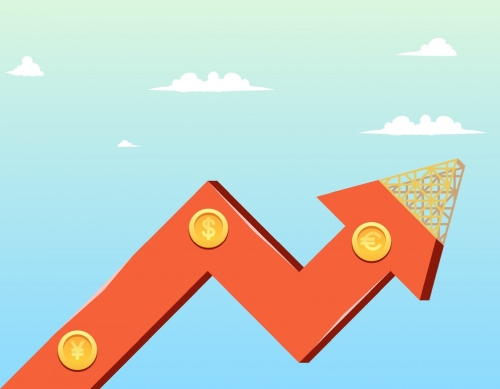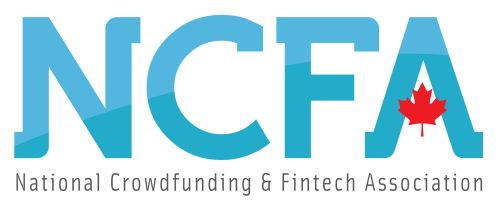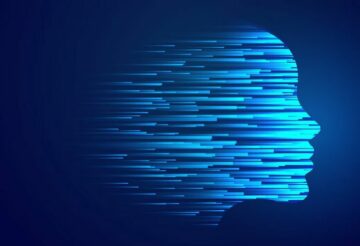Economics and Finance | May 2, 2024

 Image: Freepik/teravector
Image: Freepik/teravectorGlobal Dividend Growth Outpaces Wage Increases
Recent studies reveal a stark divergence between the growth of dividends and wages worldwide. An Oxfam study highlights that over the past three years, dividends grew 14 times faster than wages across 31 major economies. This widening gap underscores a deepening economic disparity, with shareholders benefiting significantly more than employees from corporate profits. This trend is not only indicative of the economic landscape but also serves as a critical entry point into discussing why companies issue dividends and what this means for investors and fintechs.
- The index encompasses the top 1,200 global companies, accounting for 90% of the world’s dividend payments. According to the report, between 2020 and 2023, dividend distributions surged by 45%, totaling $195 billion across 31 countries, while wage growth remained modest at only 3%.
See: Seedrs to Offer Investors Venture Capital Trusts
- In the UK, dividends rose by 13% from 2020 to 2023 after adjusting for inflation, while wages remained stagnant. This highlights a specific instance of broader global trends where shareholder gains vastly outpace those of employees.
- Research from the Common Wealth thinktank indicates that over a 30-year period in the UK, dividends grew 5.5 times faster than wages annually on average. If wages had kept pace, workers would be significantly better off annually.
Long-Term Economic Implications
The long-term economic implications of dividends outpacing wage growth could be significant for countries in this situation:
- A continuous lag in wage growth relative to dividends could reduce overall consumer spending power. Since wages are a primary source of income for most people, stagnant wages can limit consumption, impacting sectors reliant on domestic spending.
- Enhanced dividend payouts primarily benefit those who own stocks, typically the wealthier segments of society. As dividends grow faster than wages, wealth disparities may widen, leading to increased economic inequality. This can have broad social consequences, including diminished social cohesion and increased political pressure for redistributive policies.
See: R/Note: Tokenized VC Dividends on Avalanche
- Over time, significant disparities in income growth can lead to economic instability. If the majority of the population sees little improvement in living standards, it could lead to decreased economic participation, lower productivity growth, and potentially more volatile economic cycles.
How Does the Capital Gains Tax Increase Factor Into This?
The recent changes to the capital gains tax in the 2024 federal budget could potentially influence long-term economic impacts, especially in contexts where dividends continue to outpace wage growth. The new rules will increase the capital gains inclusion rate from 50% to 66.67%, starting from June 25, 2024. This adjustment means that a larger portion of capital gains will be subject to taxation, potentially reducing the attractiveness of investments that are prone to generating significant capital gains.
- For businesses and investors, this might slow down investment strategies that heavily rely on capital gains, potentially impacting how companies distribute profits and thus affecting dividend growth over time. Additionally, the changes are projected to generate substantial tax revenues ($19.4 billion over five years), suggesting a significant impact on national economic policy and funding.
See: Canada’s Capital Gains Tax Changes Sparks Economic Debate
- Higher taxes on capital gains could/will discourage investment and reduce the disposable income of investors, possibly leading to reduced consumer spending. This, in turn, could affect overall economic stability, particularly if dividends and corporate profits continue to grow at rates significantly higher than wages.
What Do These Trends Mean for For Fintechs and Investors?
- Investors need to evaluate such dividend increases critically, understanding whether these increases are sustainable and what they say about the company’s long-term growth prospects. Increased dividends can improve the yield on their investment but might also mean the company is not investing in future growth.
- Investors who want to advocate against Canada’s proposed new capital gains tax rules may be interested in supporting the Council of Canadian Innovator’s Open Letter: Prosperity for Every Generation. Learn more about the pros and cons of Canada’s newly proposed Capital Gains Tax in the 2024 federal budget.
- Fintech companies can leverage these trends to offer enhanced analytical tools, provide real-time dividend tracking, and create investment products that cater to income-seeking investors. Additionally, understanding dividend trends can help fintechs forecast market movements and advise their users accordingly.
5 Ways DAOs Can Streamline Dividend Management
A Decentralized Autonomous Organization (DAO) might offer several advantages for a company looking to consistently increase or manage dividends over time, especially in terms of governance, stakeholder engagement, and financial management.
- In a DAO, decisions are made democratically through a collective voting process where stakeholders (governance rights holders) vote on proposals, including those regarding dividend policies. This democratized structure can ensure that the decision to increase (or decrease) dividends aligns with the majority of stakeholders’ interests, potentially leading to more consistent and sustainable dividend policies.
- DAOs can potentially increase stakeholder engagement by providing a transparent and direct way for investors to influence company policies, including dividend strategies. This might lead to greater investor satisfaction and loyalty, as stakeholders feel more directly involved in the company’s financial decisions.
See: Wyoming Passes the DUNA Act, A Legal Framework for DAOs
- DAOs operate based on smart contracts that automatically execute agreed-upon actions when certain conditions are met. For dividend distribution, a DAO could automate and streamline the process, ensuring that dividend increases are executed precisely as voted on, reducing administrative overhead and the risk of errors or manipulation.
- The use of blockchain technology in DAOs provides an immutable record of all transactions and decisions, including those related to dividends. This transparency can increase trust among investors, as they can easily verify that dividends are being managed and distributed as promised.
- The agility of a DAO in decision-making might allow it to adapt more quickly to changing market conditions that affect dividend payouts. Rapid consensus through voting can enable quicker strategic shifts compared to traditional corporate structures, potentially maximizing dividend outputs in favorable conditions.
Outlook
As dividends continue to outpace wage growth, understanding the implications for economic stability and equity is crucial. By leveraging a DAO structure, a company might find it more feasible to implement and maintain a progressive dividend policy that aligns with the interests of a diverse group of stakeholders, ensuring the company’s long-term financial health and attractiveness to investors.
See: Canada’s Lagging AI Adoption Needs to Accelerate to Compete
This structure could be particularly advantageous for companies in rapidly evolving industries or those seeking to engage a broad base of international investors.

 The National Crowdfunding & Fintech Association (NCFA Canada) is a financial innovation ecosystem that provides education, market intelligence, industry stewardship, networking and funding opportunities and services to thousands of community members and works closely with industry, government, partners and affiliates to create a vibrant and innovative fintech and funding industry in Canada. Decentralized and distributed, NCFA is engaged with global stakeholders and helps incubate projects and investment in fintech, alternative finance, crowdfunding, peer-to-peer finance, payments, digital assets and tokens, artificial intelligence, blockchain, cryptocurrency, regtech, and insurtech sectors. Join Canada’s Fintech & Funding Community today FREE! Or become a contributing member and get perks. For more information, please visit: www.ncfacanada.org
The National Crowdfunding & Fintech Association (NCFA Canada) is a financial innovation ecosystem that provides education, market intelligence, industry stewardship, networking and funding opportunities and services to thousands of community members and works closely with industry, government, partners and affiliates to create a vibrant and innovative fintech and funding industry in Canada. Decentralized and distributed, NCFA is engaged with global stakeholders and helps incubate projects and investment in fintech, alternative finance, crowdfunding, peer-to-peer finance, payments, digital assets and tokens, artificial intelligence, blockchain, cryptocurrency, regtech, and insurtech sectors. Join Canada’s Fintech & Funding Community today FREE! Or become a contributing member and get perks. For more information, please visit: www.ncfacanada.org
Related Posts
- SEO Powered Content & PR Distribution. Get Amplified Today.
- PlatoData.Network Vertical Generative Ai. Empower Yourself. Access Here.
- PlatoAiStream. Web3 Intelligence. Knowledge Amplified. Access Here.
- PlatoESG. Carbon, CleanTech, Energy, Environment, Solar, Waste Management. Access Here.
- PlatoHealth. Biotech and Clinical Trials Intelligence. Access Here.
- Source: https://ncfacanada.org/2024-sees-diverging-paths-for-dividends-and-wages/
- :is
- :not
- :where
- 14
- 150
- 2%
- 200
- 2018
- 2020
- 2023
- 2024
- 25
- 300
- 31
- 32
- 4
- 5
- 62
- 66
- a
- About
- accelerate
- According
- accordingly
- Accounting
- across
- Act
- adapt
- Additionally
- adjusting
- Adjustment
- administrative
- Adoption
- advantageous
- advantages
- advise
- advocate
- affect
- affecting
- affiliates
- After
- against
- AI
- AI adoption
- Aligns
- All
- All Transactions
- allow
- also
- alternative
- alternative finance
- among
- an
- Analytical
- and
- Annually
- ARE
- artificial
- artificial intelligence
- AS
- Assets
- At
- attractiveness
- automate
- automatically
- autonomous
- Avalanche
- average
- base
- based
- BE
- become
- being
- benefit
- benefiting
- Better
- between
- Billion
- blockchain
- blockchain technology
- broad
- broader
- budget
- businesses
- but
- by
- cache
- CAN
- Canada
- Canadian
- capital
- capital gains tax
- cater
- certain
- Changes
- changing
- closely
- cohesion
- Collective
- community
- Companies
- company
- Company’s
- compared
- compete
- conditions
- Cons
- Consensus
- Consequences
- consistent
- consistently
- consumer
- consumption
- contexts
- continue
- continuous
- Corporate
- could
- Council
- countries
- create
- critical
- Crowdfunding
- cryptocurrency
- cycles
- DAO
- DAOs
- debate
- decentralized
- decision
- Decision Making
- decisions
- decrease
- decreased
- democratized
- digital
- Digital Assets
- direct
- directly
- discussing
- disparity
- distribute
- distributed
- distribution
- distributions
- Divergence
- diverse
- dividend
- dividends
- do
- does
- Domestic
- down
- easily
- Economic
- economic impacts
- Economic policy
- ecosystem
- Education
- employees
- enable
- encompasses
- engage
- engaged
- engagement
- enhanced
- ensure
- ensuring
- entry
- equity
- especially
- Ether (ETH)
- evaluate
- Every
- evolving
- execute
- factor
- faster
- favorable
- feasible
- Federal
- feel
- finance
- financial
- financial health
- financial innovation
- financial management
- Find
- fintech
- fintechs
- five
- For
- For Investors
- Forecast
- Framework
- from
- funding
- funding opportunities
- future
- Gains
- gap
- generate
- generating
- get
- Global
- governance
- Government
- greater
- grew
- Group
- Grow
- Growth
- had
- Have
- Health
- heavily
- help
- helps
- High
- higher
- highlights
- holders
- How
- http
- HTTPS
- if
- image
- Impact
- impacting
- Impacts
- implement
- implications
- improve
- improvement
- in
- Including
- inclusion
- Income
- Increase
- increased
- Increases
- index
- indicates
- indicative
- industries
- industry
- inflation
- influence
- information
- Innovation
- innovative
- Innovator
- instance
- Insurtech
- Intelligence
- interested
- interests
- International
- international investors
- into
- investing
- investment
- Investments
- investor
- Investors
- involved
- issue
- IT
- Jan
- jpg
- june
- kept
- lagging
- landscape
- larger
- lead
- leading
- LEARN
- Legal
- legal framework
- letter
- Leverage
- leveraging
- LIMIT
- little
- living
- long-term
- looking
- lower
- Loyalty
- made
- maintain
- major
- Majority
- manage
- managed
- management
- Manipulation
- Market
- market conditions
- max-width
- maximizing
- May..
- mean
- means
- member
- Members
- met
- might
- modest
- more
- most
- movements
- National
- Need
- needs
- networking
- New
- newly
- of
- off
- offer
- on
- only
- operate
- opportunities
- or
- outputs
- over
- overall
- overhead
- own
- Pace
- participation
- particularly
- partners
- passes
- past
- paths
- payments
- payouts
- peer to peer
- People
- period
- perks
- plato
- Plato Data Intelligence
- PlatoData
- please
- Point
- policies
- policy
- political
- population
- portion
- possibly
- potentially
- precisely
- pressure
- primarily
- primary
- process
- productivity
- Products
- profits
- progressive
- projected
- projects
- promised
- proposed
- prospects
- prosperity
- provides
- providing
- quicker
- quickly
- rapidly
- Rate
- Rates
- real-time
- recent
- record
- reduce
- Reduced
- reducing
- regarding
- Regtech
- related
- relative
- reliant
- rely
- remained
- report
- reveal
- revenues
- rights
- Risk
- ROSE
- rules
- s
- satisfaction
- say
- Sectors
- seeking
- sees
- segments
- serves
- Services
- shareholder
- Shareholders
- significant
- significantly
- since
- situation
- slow
- Social
- Society
- Source
- Sparks
- specific
- Spending
- Stability
- stakeholder
- stakeholders
- standards
- stark
- Starting
- Stewardship
- Stocks
- Strategic
- strategies
- streamline
- structure
- structures
- studies
- subject
- substantial
- such
- Supporting
- Surged
- sustainable
- tax
- Taxation
- Taxes
- Technology
- terms
- than
- that
- The
- The Capital
- the UK
- the world
- their
- These
- they
- this
- those
- thousands
- three
- Through
- Thus
- time
- times
- to
- today
- tokenized
- Tokens
- tools
- top
- totaling
- Tracking
- traditional
- Transactions
- Transparency
- transparent
- Trend
- Trends
- Trust
- Trusts
- TURN
- typically
- Uk
- underscores
- understanding
- use
- users
- VC
- venture
- venture capital
- verify
- vibrant
- Visit
- volatile
- Vote
- voted
- Voting
- wage
- wages
- want
- Way..
- ways
- Wealth
- What
- when
- whether
- while
- WHO
- why
- widen
- widening
- Wikipedia
- will
- with
- workers
- works
- world
- worldwide
- would
- Wyoming
- years
- Yield
- zephyrnet












